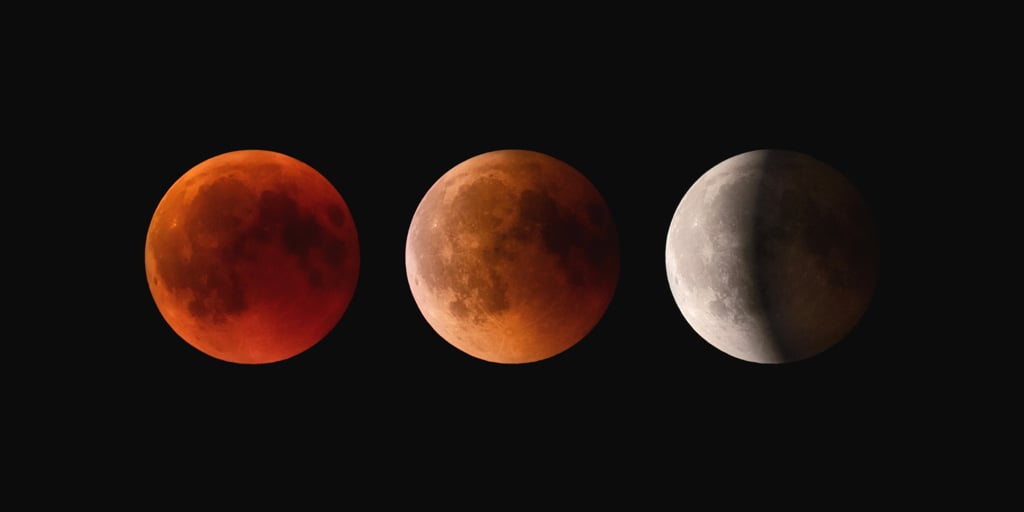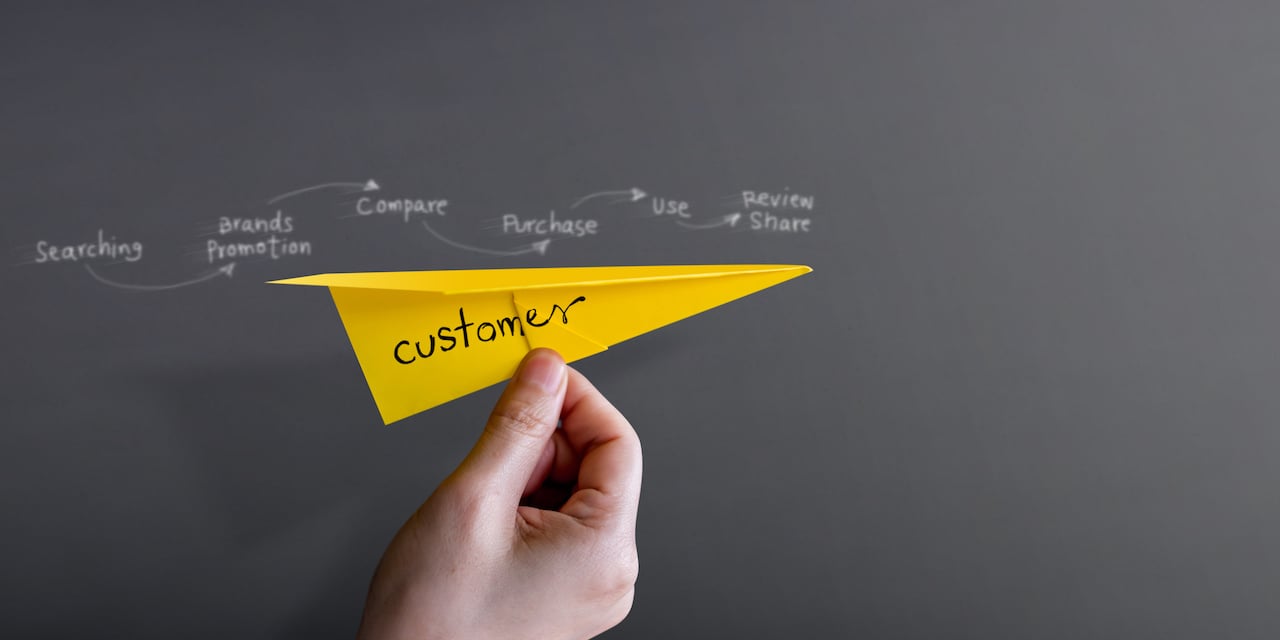Tracking your Cost-per-Click (CPC) has long been an essential marketing technique to measure your marketing expenditure and generate the best results for your online presence. But data shows that the cost of CPC targeting SEO has been halved, reflecting agencies and clients moving away from it.
Insight: Google’s PPC algorithm changes all the time, sometimes pushing the cost-per-click up without changes in the competition.
Data: PPC ads are one of the top three generators of on-page conversions. 65% of all clicks made by users who intend to make a purchase go to paid ads (Wordstream). 40% of brands planned to increase their PPC budget for 2019 (SEO Tribunal).
Key Action Point: Keep up to date with the latest changes in Google’s CPC and bidding scores to inform your paid media strategy.
Also known as Pay-per-Click (PPC), CPC refers to the price you pay for every click in your PPC marketing campaigns. Technically, you pay Google AdWords or Bing ads for placing your ads on their platforms. CPC determines the financial success of your paid search campaigns and how much your AdWords will cost.
Using this model, you can run your marketing campaigns and increase the overall traffic to your website. On top of this, CPC allows you to target the right kind of audience so you can get the maximum benefits.
Data from Google points out that pay-per-click ads have produced an 80% increase in brand awareness thanks to paid search ads.
But to achieve this, you’ll need to improve the quality score of your ad and use the best targeting options to generate the best possible results.
The Cost of Advertising Using AdWords
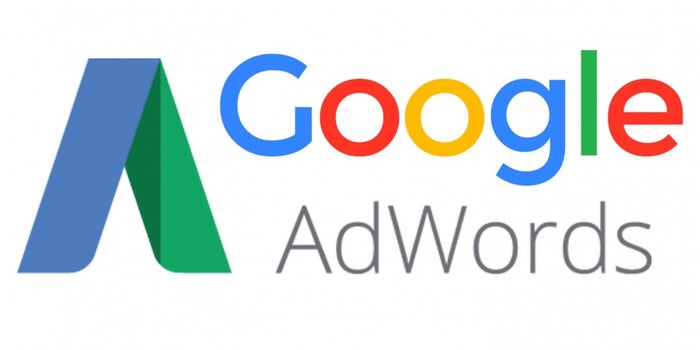 Google claims that the cost of advertising (CPC) using AdWords is a fixed calculation from when they “combine the components of Quality Score, the max CPC bid, and the expected impact of extensions and other ad formats to determine Ad Rank.”
Google claims that the cost of advertising (CPC) using AdWords is a fixed calculation from when they “combine the components of Quality Score, the max CPC bid, and the expected impact of extensions and other ad formats to determine Ad Rank.”
Then as an advertiser, your bid and subsequent placement are based on the results of that auction (Ad Rank).
However, over the last few years, it has become clear that there is more at play than that. If we can assume that the impacts for quality score and competition (the number of advertisers for that keyword) remain the same, then we can only assume that the final cost calculation is what is changing.
If more advertisers are bidding, there is increased competition and the average CPC should rise or fall within a similar ratio.
Without labouring the point, in an equal market, unless everyone’s quality score tanks, if there are fewer advertisers for a keyword, it should become less expensive to advertise in that market. I think this can be discounted because as an advertiser, there is a clear incentive to maximise Quality Score.
I have been tracking the cost of advertising using Google AdWords for well over six years now. You can find the raw data below.
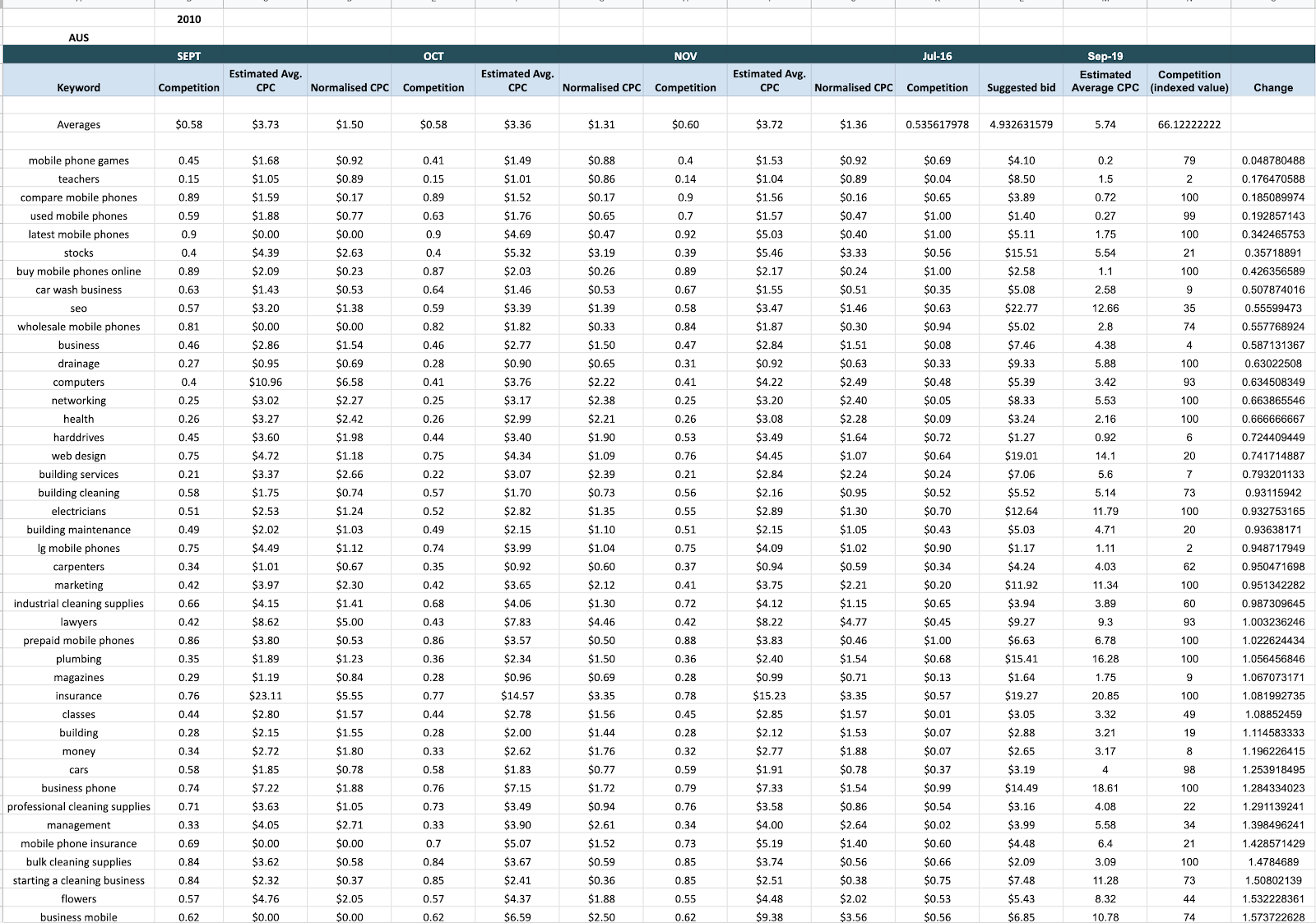
Using a basket of keywords that range from “Plumbing” to “Business Supplies”, we used Google's Keyword Tool to find the average CPC and the competition for over 90 different keywords.
Obviously, this is just 90 keywords out of possibly millions, excluding combinations, etc. However, this data was a fairly broad sample and was just intended to indicate trends and to pose an argument.
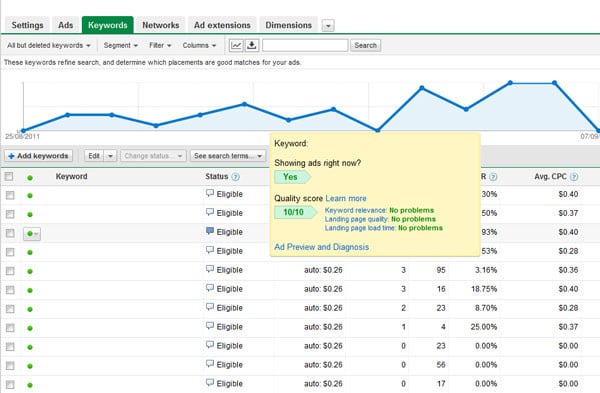
Competition Goes Down. Cost Goes Up.
In the very least, we can see from the data and the graph above that, for Australia, competition has declined by 8%, but the cost of advertising has increased by 32%. So effectively, fewer advertisers are spending more on their advertising.
There are two things that could be happening here. Either Google has an X-factor at play (which is highly likely) or the psychology behind the bidding is a race to the bottom (or top as the case may be). So even though there are less advertisers, people are paying more because they want to be number one.
It is easy to see why Google would want to use an X-Factor. It would help maintain the profitability of their biggest cash cow. It would be hard to trace/prove. It would give the appearance that things are getting more competitive. Lastly, it would start to edge out the lower bidders that are not “serious” business, whatever that means.
Psychology is also an important factor. I have spoken to a lot of organisations who insist on being number one for keywords (increasing their bidding above sensible levels), even though our ROI analysis shows that sometimes just being on the page is enough, and the top spot just gets tire kickers.
This could certainly be the case for keywords like “SEO” where the competition has only increase 6%, but the cost has increased over 711%. It also seems to be more prevalent in the United States, where the average competition for keywords has dropped by 1% but the average cost has increased by more than 25% (when accounting for currency).
Feel for the Entrepreneurs
Probably the “hardest done by” group would have to be the entrepreneurs. Keywords like “plumbers”, “carpenters”, etc. have all increased in competition, but the proportional increase in cost is often 8x higher.
Goodbye, 3G. Hello, Mobile Phone Games
The other interesting thing the data reflects is real macro changes to markets. As 3G handsets become less sought after, the competition/pricing has tanked. Similarly, as smartphones are becoming ubiquitous, the competition for “mobile phone games” has increased by 150%.
Either way, it is difficult to know for sure if it is psychology or a Google X-Factor, as we won’t know if the system is forcing the bids or if people are deliberately driving the cost up, despite what might be in their best interest.
After all, if people bid just enough to get on the front page, and no more, the average cost would decrease.
The other way to look at this is, with Google’s search monopoly, advertisers should include AdWords as a part of their overall digital strategy, and not the only thing.
Key Takeaways
- Some industries have seen a doubling in the CPC since 2016, including appliances and travel
- CPC targeting SEO now costs half of what it used to be, possibly reflecting agencies and clients moving away from that as an outsourced service
- Some high-cost keywords remain unchanged such as “plumbing” and “insurance”. These have always represented the most expensive categories of keyword with over $20 CPC for the top of the page
- The data also provides an interesting snapshot of search when the data was first collected, with volumes for “3g mobile” and “pda mobile phones” having high search volumes a decade ago and now having nothing.
Google Builds Up Automated Bidding Strategies
Last week, Google rolled out new updates to give advertisers more opportunities to take advantage of automated bidding in more campaigns.
With the expansion of its automated bidding solutions for Google Ads, there are now two new options to help advertisers get the best results for their ad spend.
Google’s automated bidding strategies makes use of machine learning to evaluate and tailor ad bids to help advertisers get to more people while making sure they are within their budget.
The problem with automated bidding was that it only supported buying on a cost per thousand impressions (CPM) basis. As a result, advertisers had to pay every time their ad was seen. But because many campaigns are now focused on different user actions like clicks, app installations, and conversion, this resulted in a misalignment with what they needed versus the actions that they were paying for.
According to Google, “With outcome-based buying, advertisers using target cost per acquisition (CPA) or maximise conversion strategies can now utilise cost per click buying for campaigns. The system will then optimise bids to get more of the results that marketers care about, and they will only pay for clicks.“
Using Google’s machine learning, brands are now able to show up at the right time for the right person and get better ROI by paying for actions that lead them to achieve their campaign objectives.
Conclusion
Google has not disclosed as much information as they used to about the relative CPCs, but in recent years, they have started showing a lot more information about trends, which can help marketers tailor their brand’s paid media strategy accordingly to increase their ROI and achieve their goals without stretching their marketing budget too thinly.
We have seen how Google’s bidding score has changed, pushing the CPC up without changes in the competition. This plays a significant role in the price we pay for branded keywords. With the gap getting smaller, eventually, the cost per click may fall below what brands and marketers are willing to pay for traffic.
Increase your brand awareness through a solid paid media strategy. Find out more about how our full-service digital strategy can help you reach your goals.
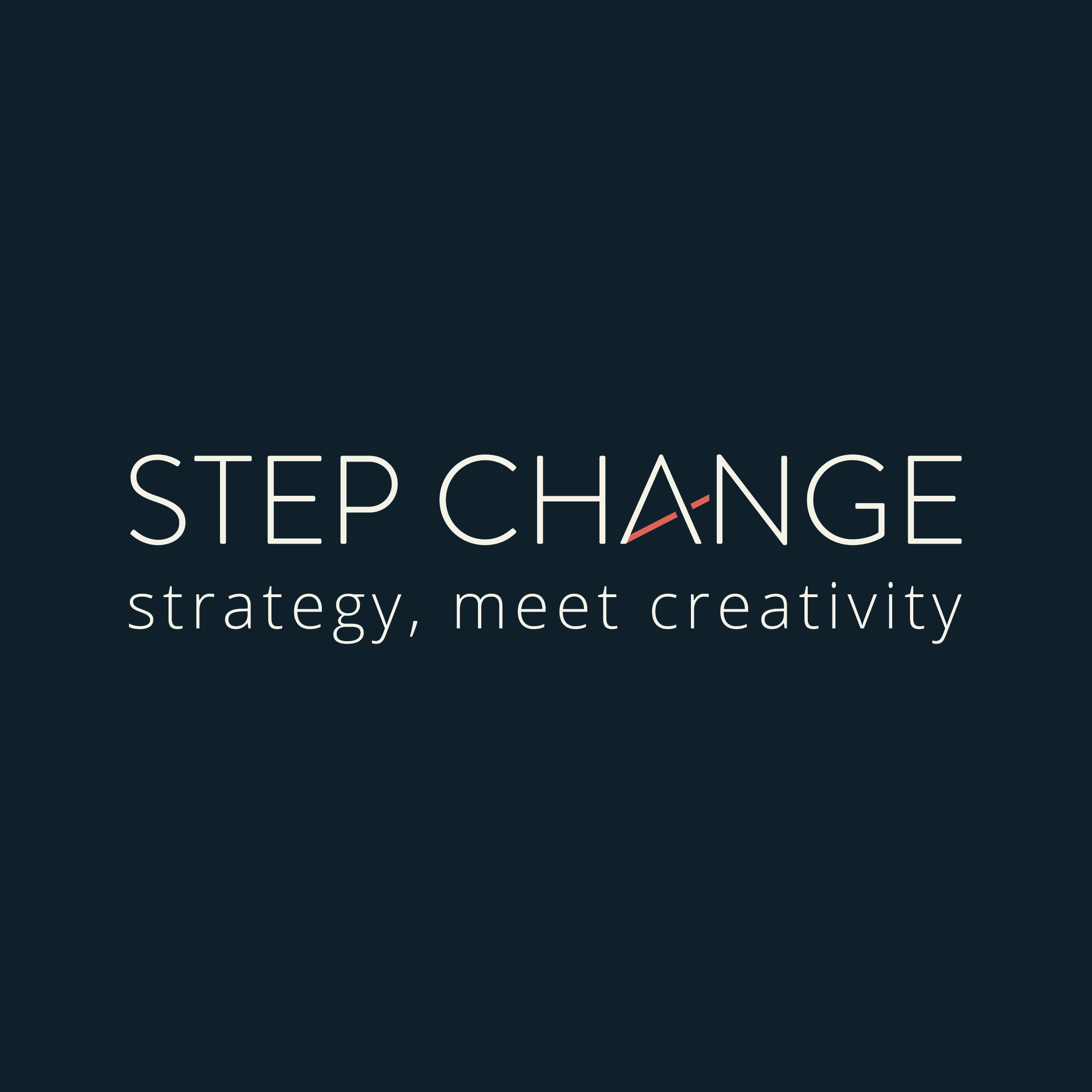

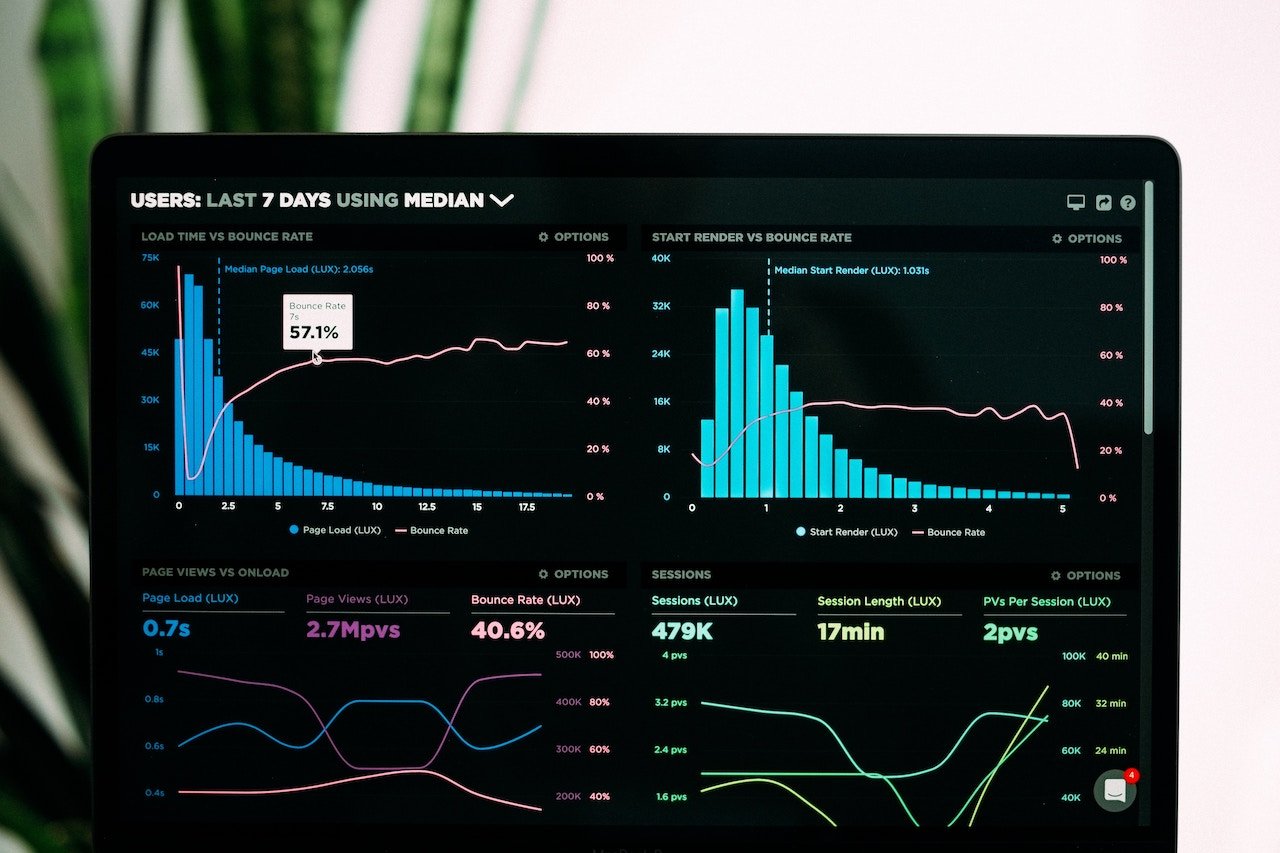




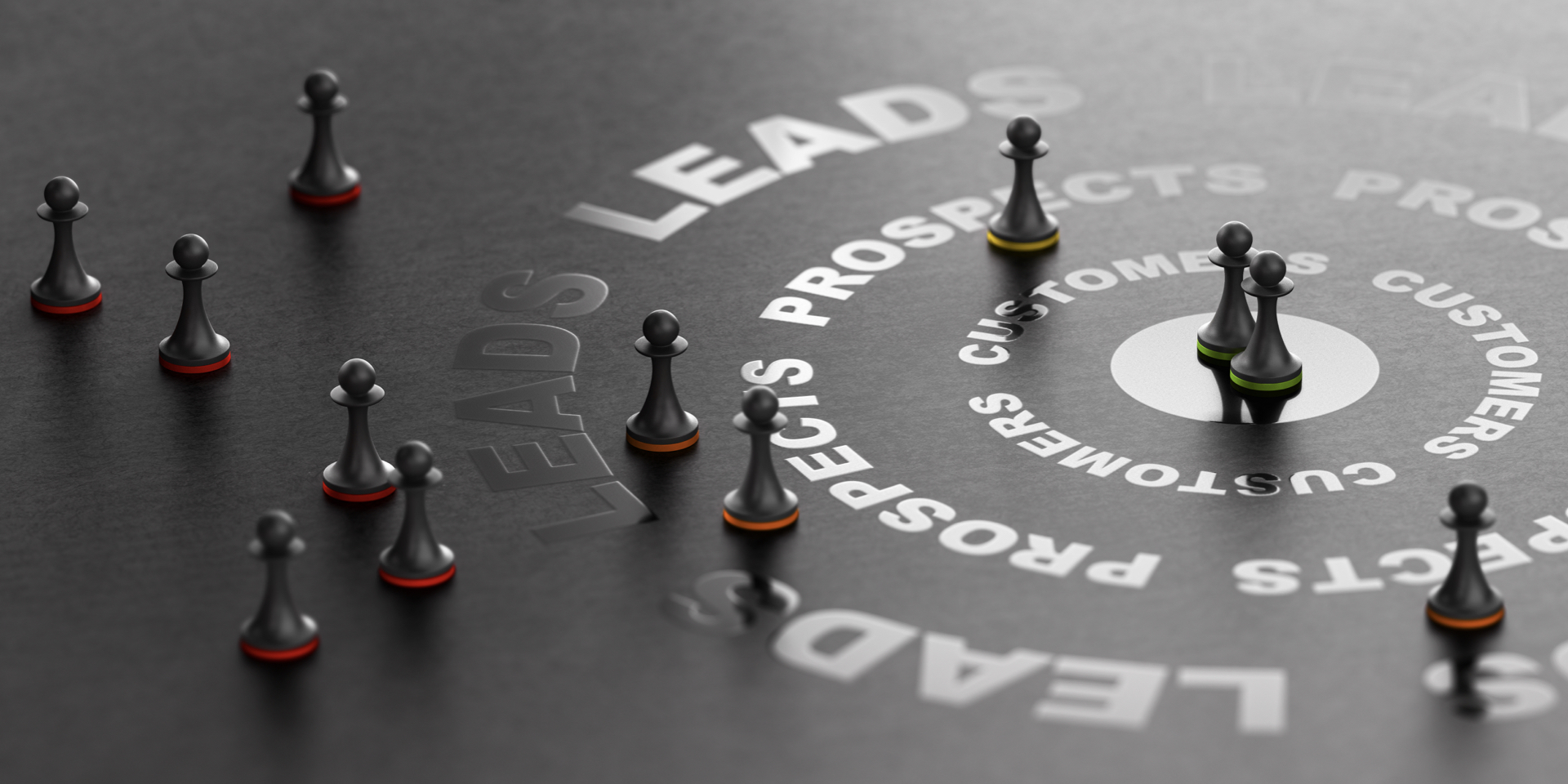
![#KatieTalks to Step Change’s Robert Steers [PODCAST]](https://blog.hellostepchange.com/hubfs/BLOG/Posts/5-Connection/katie-talks-robert-steers.001.jpeg)



